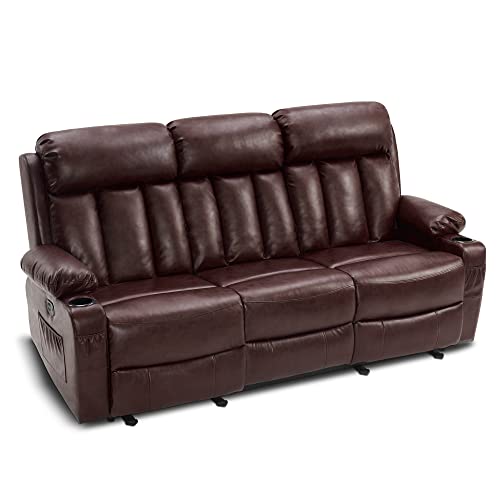How to Spot a Genuine Leather Sofa
With a buttery-soft leather upholstery this sofa looks fantastic in any room. Customers love its simple styling, and the high-quality genuine leather upholstery.
Untrained eyes might have trouble discerning the difference between genuine and faux leather. Here are six tips to help you distinguish between the two: 1. Rough edges.
1. Labels are important
Genuine leather has a distinctive appearance and feel that’s difficult to replicate. It’s also robust and easy to clean. It doesn’t absorb excess body oils, making it a perfect choice for families with allergies. However not all leather sofas are created equal. In fact, some stores have even been known to disguise PVC as genuine leather.
Understanding the different types leather can help you avoid being ripped off. This includes determining the differences between top and full grain leather, as well as evaluating the quality of the upholstery material. Don’t hesitate to ask discerning retailers for this information.
The first step in identifying a genuine leather sofa is to examine the label. The label should clearly indicate the type of leather used to cover the sofa, along with any other materials such a fabric or cotton. In addition, reputable sellers should have clear policies on exchange or return in the event that you aren’t satisfied with your purchase.
If the sofa isn’t marked with a label however, you can still figure out its authenticity by examining the fabric backing or opening a cushion casing to check for synthetic materials. You can also check the texture of the leather and see whether it has any imperfections or bumps, since these are indicators that you’re dealing in fake or bonded leather.
Another way to check the integrity of a sofa is the surface of the sofa using your fingertips. Genuine leather has a smooth and soft texture, while faux or bonded leather will be more coarse and more akin to suede. You should also be able feel the difference between bumps, wrinkles, and printed patterns of faux leather and genuine leather.
While a genuine leather sofa may cost more than its faux counterpart It’s a wise investment as it will last longer and often become family heirlooms over the years. Place your leather sofa in an airy cool, cool space, away from fireplaces, heaters and air cooling units. This will help reduce the damage caused by humidity, heat, and the ozone. You can also use leather protection creams to keep your sofa in good shape and sturdy.
2. Look to the back
If the label does not identify the type of leather is in a sofa, it is essential to examine it close. The smell, texture and the backing will be clear indicators of authenticity.
When you touch the surface of genuine leather, it will not feel smooth and silky. This is because animal hides have a variety of pores that allow it to breathe. A leather product that is completely smooth could be fake leather.
Look for bumps or uneven surfaces. The process of making genuine leather requires buffing, which eliminates some of the rough outer skin. If the leather covering your sofa is top grain leather, there will still be some bumps.
You can also test the leather by running your fingers over it and pressing down into it. If the leather is real it will stretch and wrinkle like human skin. This allows the leather to breathe and keeps it from becoming dry or cracking in time.
Faux leather has a consistent pattern because it’s printed, while genuine leather is prone to imperfections that enhance the beauty and durability of the leather. This includes creases and scratches. Genuine leather is soft and a little stiff when it’s brand new. However, it shouldn’t dry out or crack when you treat it regularly with a leather protection cream.
Certain furniture manufacturers mix real leather with synthetic leather in order to save money. The contact areas, such as the arm rests, seats and backs are made from real leather while the non-contact components, like the base and outside arms are upholstered in polyurethane, which is less expensive or leather-like synthetic fabric. This is a common practice and even if the sofa has a genuine leather label be sure to examine it closely to see what the backing is made of, as this is an instant giveaway that it’s not genuine leather.
Labels and pricing can guide you in the right direction, but to truly ensure that a sofa is genuine leather, it’s important to be able to get close and close to it. Look at the back of the sofa for any signs of polyurethane which indicates that it’s not genuine leather.
3. Look at the seat
A genuine leather sofa’s seat is also an excellent indicator of the quality. Genuine leather is distinct from faux leather, which is a combination of materials. It has a distinct texture and feels smooth when you touch it. Be aware of bumps under the surface, and a distinct, natural scent. These are the characteristics that distinguish genuine leather from fakes and low-grade leather.
If the leather is stitched in a continuous, huge piece, this is another obvious sign. This is typical with faux leather, but if it is seen on genuine top-grain leather and you are looking for a sofa, avoid the sofa.
The price and the label might provide an idea, but the only sure way to know is to feel the furniture. Genuine leather will not be flawless and have a rough feel. It also has rough edges and fat wrinkles underneath the surface. The suppleness of genuine leather also feels different from synthetic materials, and the temperature of the furniture will indicate whether it’s constructed using genuine materials.
A leather sofa is an interior design mainstay for good reason: It’s Stylish Saemoza Leather Sleeper Sofa Bed and Ottoman (you could try this out), durable and lasts for a long time. It’s also easy to clean and resistant to liquid spills. This makes it an ideal option for families with pets or children. Genuine leather is a timeless design that will never go out of fashion. It’s also available in different price ranges.
Think about Pottery Barn’s Turner for a leather couch that will last for a lifetime. Although this two-seater is more expensive however, it’s constructed with high-end top-quality leather and features a timeless design that won’t age quickly. It’s an excellent choice for those who have small rooms, too, because it’s available in three sizes and is small enough to fit into the majority of rooms.
This All Modern Geo Genuine Leather sofa is a great option to consider if you’re looking for something contemporary. The mid-century-Modern Beige Recliner Chair – Adjustable Ergonomic Design-inspired sofa has an angular, sleek design with a round pillow and a sleek frame. While the frame is crafted from plywood, composite and plastic, this sofa features genuine leather only in the seating area, which is a step up from Ikea’s faux-leather couch, which was awarded the CHOICE’s “Shonky” award in 2015.
4. Check out the smell
Real leather has a distinctive scent. It’s a natural, organic scent that is impossible to duplicate. If the sofa you’re considering buying has a strong synthetic smell, it is not genuine. Most often, this is due to the chemicals used to make the leather. They remain in the furniture after it’s been constructed and even after you bring it home.
A good way to test the quality of a leather sofa is to run your fingers along the surface. Real leather will feel rough and include bumps and lumps like human skin. If it is smooth and cold, it’s probably faux or bonding.
You can also take one of the cushions and inspect the back. False and bonded leather will have a polyurethane backing that supports the fabric, whereas genuine leather has an untreated back that is similar in appearance to coarse suede. If the couch has a woven backing, it is not genuine leather.
Peter suggests that if you are trying to determine whether the sofa is authentic, the best way is to put it against your body and then gently run your fingers along the surface. The roughness of the leather will make your fingernails slightly dull and the surface will stretch and wrinkle a little. It should also feel warm and supple to the touch.
The sofa’s back and checking the upholstery will let you know if the sofa is genuine. Faux and bonded leather will have a plastic covering on the back of the sofa while genuine leather will be a single piece of leather that covers the entire back of the sofa.
 Consider how often you’ll use your leather sofa and how long it is expected to last before deciding on the best. The more you utilize a couch and the more you use it, the more it will need to be taken care of. Peter suggests regular, gentle cleaning with a conditioner for leather. This will help to maintain the leather’s suppleness and stop it from drying out and becoming hard.
Consider how often you’ll use your leather sofa and how long it is expected to last before deciding on the best. The more you utilize a couch and the more you use it, the more it will need to be taken care of. Peter suggests regular, gentle cleaning with a conditioner for leather. This will help to maintain the leather’s suppleness and stop it from drying out and becoming hard.
